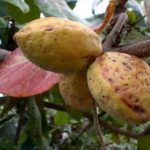
EXPERTS say that Kano male residents with sickle cell disease (SCD) who have sexual dysfunction were more than twofold higher than those without the disease who have erectile dysfunction. They also experience a higher prevalence of priapism, a painful, persistent, and purposeless erection, when compared with those without sickle cell disease.
In a comparative cross-sectional survey, researchers said that men with sickle cell disease experience greater sexual dysfunction when compared with men without sickle cell disease and found that stuttering priapism accounted for 73.6 per cent of the priapism episodes in men with SCD.
Among other problems, sexual dysfunction can reduce the desire for sex, or the inability to become sexually aroused. It may prevent achieving an orgasm, cause premature ejaculation, or it may cause pain during intercourse.
The survey carried out at the Aminu Kano Teaching Hospital and Murtala Mohammed Specialist Hospital, all in the Kano metropolis over a 4-week period included 500 and 250 married men, 18 to 40 years of age, with and without SCD, respectively. It is in the 2020 edition of the journal, Blood Advances.
They reported that the most common priapism duration was 3 to 4 hours, and the least frequently reported duration was 5 to 6 hours. Young adults (18-25 years) were the most commonly reported age group at the first onset of priapism in participants with SCD and those without it.
ALSO READ FROM NIGERIAN TRIBUNE
- Nurse Holds Doctor Hostage In OAU Teaching Hospital, Resident Doctors Plan Strike
- Woman’s Corpse, Unconscious Man Found Inside Office In Aba After Four Days
- Hoodlums Attack Lagos Governor’s Press Crew Bus In Tinubu’s Convoy, Two Injured
- [BREAKING] #EkitiDecides2022: INEC Declares APC’s Biodun Oyebanji Winner Of Guber Poll
- Top 10 Business Ideas In Nigeria You Can Start With 100,000 Naira
- 2023: Kwankwaso Will Not Be Deputy To Obi —NNPP
According to the survey, the predominant type of priapism reported by the men with SCD and those without it was stuttering and rare (a single episode of priapism lasting ≤4 hours), respectively, with monthly recurrence being the most typical pattern when compared with the single episodes reported by only 2.0 per cent of the men without SCD.
In addition, some men with SCD-related priapism had had at least 1 episode of priapism lasting 72 hours; those without SCD had none. Deformity of the penis or scarring occurred in 22.9 per cent of those with SCD-related priapism and in 0 per cent of those without it.
They said that most of the men with SCD-related priapism (89.6 per cent) reported sleep as the precipitant of an episode compared with 20 per cent without SCD, and only 9.8 per cent of the men with SCD attributed their priapism to sexual desire compared with 20 per cent without SCD.
According to researchers, the psychological effects of priapism were typically sadness (66.9 per cent), embarrassment (62 per cent), fear (43.7 per cent), and exhaustion (38.7 per cent) and despite the high level of mental duress associated with priapism, 48.5 per cent of the men with SCD-related priapism never sought medical treatment for the condition.
The study said that exercise (79.7 per cent) was the most common nonmedicinal strategy the men with SCD resort to in a bid to cope with recurrent priapism, followed by cold or hot packs (51.4 per cent) administered to the penis, and a cold shower (44.6 per cent).
Given that a high level of sexual dysfunction can further compound the low quality of life in individuals with SCD, the researchers said that further research is needed to elucidate the cause and optimal treatment of sexual dysfunction in men with SCD.
WATCH TOP VIDEOS FROM NIGERIAN TRIBUNE TV
- Let’s Talk About SELF-AWARENESS
- Is Your Confidence Mistaken for Pride? Let’s talk about it
- Is Etiquette About Perfection…Or Just Not Being Rude?
- Top Psychologist Reveal 3 Signs You’re Struggling With Imposter Syndrome
- Do You Pick Up Work-Related Calls at Midnight or Never? Let’s Talk About Boundaries






